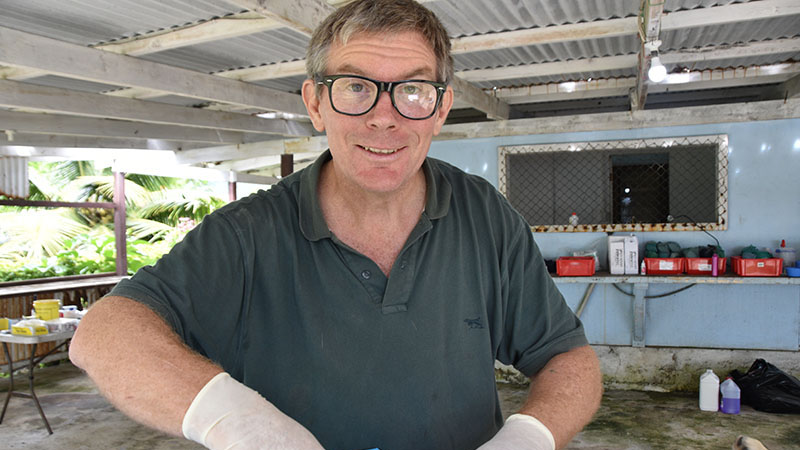Pet Talk with Dr Michael Baer
Wednesday 22 December 2021 | Written by Supplied | Published in Opinion, Pet Talk

Te Are Manu Veterinary Clinic services vet Dr Michael Baer. PHOTO: AL WILLIAMS 21092206
Five freedoms, the foundation of Animal Welfare, Justice Potter Stewart, in a famous US Supreme Court ruling, said, roughly, “I can’t define it, but I know it when I see it”. He wasn’t talking about animal welfare, but he could easily have been.
Animal welfare means something different to everybody, they know it when they see it. Some believe it is unacceptable to use animals or animal product in any way, others apply it to some animals but not others. So, is there a baseline we can agree to? Something we can’t define but we know it when we see it? Or better yet, can we define it?
The Five Freedoms are the internationally recognised base for Animal Welfare and cover the physical and mental welfare of all animals. They are how the world generally defines animal welfare. So, what are they and do they make sense?
The first is freedom from hunger and thirst. It seems straight forward to say that all animals should be provided with adequate fresh food and water. We can probably all agree on that. So far so good.
The second is freedom from discomfort, and it suggests that animals should have an environment that provides shelter from weather (hot and cold), and a comfortable resting area. Sensible enough.
The third is freedom from pain, injury, or disease. Rapid provision of care to relieve the suffering of animals is the first duty of animal owners and the primary duty of veterinarians. Still not much to argue with.
The fourth is freedom to display normal behaviour. This means animals should have enough space, appropriate facilities, and the company of animal’s own kind. Makes sense.
The fifth is freedom from fear and distress. Providing an environment and treatment that makes the animal feel safe, once again is hard to argue against.
These five freedoms, and the human behaviour they require, are the international understanding of animal welfare, and each freedom must be met for good welfare to be achieved. As is often the case with such things we usually meet these obligations without realizing it, just by doing what we do.
But, as always, it is when we are aware of what we do that we have the most beneficial impact. Checking that cattle can reach fresh grass before they can’t reach the fresh grass. Making sure goats and pigs have shade. Making sure all tethered livestock can reach water. Making sure we change tethers on pigs before they cut in and do damage. Training dogs not to chase cats or bother livestock, so the cats and livestock are not constantly fearful. Taking these few steps before the problems develop ensures we not only meet our obligations, but we can also be proud of how we do it.














































